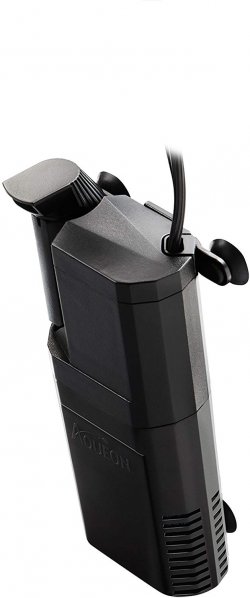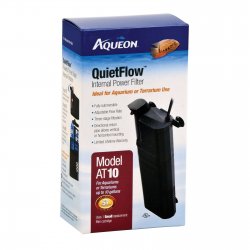That stuff looks awesome!!Not sure if I am allowed to post links but it is this https://www.barlowsaquatics.co.uk/b-d-sand
-
Guest, the Tank of the Year contest is underway!
💧 Which tank will win? 👉 View the entries and vote now!!
You are using an out of date browser. It may not display this or other websites correctly.
You should upgrade or use an alternative browser.
You should upgrade or use an alternative browser.
New tank, need substrate ideas.
- Thread starter ElNevera
- Start date
ElNevera
New Member
I really appreciate your post, very informative. That sifting behaviour is one I have seen in my old marine tank with a sand sifting Goby. Very interesting to watch them work!All species of Corydoras require soft fine sand as the substrate. Their natural habitats all have this, usually straight sand, sometimes a mix of sand, gravel, silt depending. But all species live over sand. They filter feed by taking a mouthful of sand, extracting any particles of food, and expelling the sand via the gills. This is as another member noted a fact of their genetic makeup. To deny them this is cruel and inhumane, regardless of other serious issues resulting from different substrate. Gravel is a risk of bacterial issues for such substrate feeders.
As for the type of sand...colour is very important because the cories "expect" to blend in with the sand substrate, and having garish colours, or white or black, causes them stress. This is scientific fact, not debatable. A buff-tone sand is natural. You can use a dark natural tone, like dark buff or dark grey. You can buy aquarium river sand (make sure it is inert, not calcareous intended for marine fish or rift lake cichlids). Or use a quality play sand. As you @ElNevera are in the UK, you can use Argos Play Sand. Much less expensive, but good quality substrate sand.
As for the background, something dark and inobtrusive is best. This will calm the fish. I use plain black construction paper taped to the outside. The tank visually appears larger, the fish are less stressed, and the colours in the tank are more beautiful.
Not sure if I am allowed to post links but it is this https://www.barlowsaquatics.co.uk/b-d-sand
Yes you can post links, provided it is not to another fish forum.
This sand seems ideal. And I am pleased to see their information on their personal observations of the substrate in all habitats being sand...I can't see you having issues with this sand.
On the filter question, a canister in my view is pretty substantial for a smaller tank like this 120 liter. I assume it is no longer than 90 cm/36 inches length. You might consider a small internal filter, like the Aqueon Quiet Flow series. I had one of these in each of my 33g and 40g tanks, with cories and upper fish, and they were ideal.
Attachments
ElNevera
New Member
Once again, thank you! I made a mistake in my original post. I actually bought the 200 litre / 55g version of the Lido. I don't know why I put 120.... It is 71cm long, 51 cm wide and ~ 60cm usable depth. They come with internal filters new but I bought mine second hand.Yes you can post links, provided it is not to another fish forum.
This sand seems ideal. And I am pleased to see their information on their personal observations of the substrate in all habitats being sand...I can't see you having issues with this sand.
On the filter question, a canister in my view is pretty substantial for a smaller tank like this 120 liter. I assume it is no longer than 90 cm/36 inches length. You might consider a small internal filter, like the Aqueon Quiet Flow series. I had one of these in each of my 33g and 40g tanks, with cories and upper fish, and they were ideal.
Once again, thank you! I made a mistake in my original post. I actually bought the 200 litre / 55g version of the Lido. I don't know why I put 120.... It is 71cm long, 51 cm wide and ~ 60cm usable depth. They come with internal filters new but I bought mine second hand.
Filtration is primarily concerned with the water movement because this affects fish (and plant uptake of nutrients if excessive). The actual "filtration" depends upon the fish load and live plants. With plants your "filtration" is for all intents and purposes unnecessary because the plants will do most of this provided the stocking is in balance. So the filter is moving the water and this depends upon the needs of the fish. I had a canister on my 4-foot 70g and 90g and 5-foot 115g tanks. But my smaller tanks had either internal filters like the Quiet Flow, or sponge filters connected to an air pump.
With cories, you want some water movement so the Quiet Flow is better here than say a dual sponge filter.
I had another issue with canisters, the extra work cleaning them. I tended to leave them longer than some aquarists would, whereas my internal sponge filters and the Quiet Flow got cleans each water change.
plebian
Fish Crazy
Once again, this is simply false. The following is from Wikipedia (the statement is references a science paper):All species of Corydoras require soft fine sand as the substrate.
Corydoras are generally found in smaller-sized streams, along the margins of larger rivers, in marshes, and in ponds.[2] They are native to slow-moving and almost still (but seldom stagnant) streams and small rivers of South America, where the water is shallow and very murky. Most species are bottom-dwellers, foraging in sand, gravel or detritus.
plebian
Fish Crazy
The barbel issue is a myth. The reason some corydoras suffer from damaged barbels is due to poor water quality with high levels of bacteria. In any case, see the following links:It isn't. It is written in their genetic code to sift through sand. They are MEANT to do it. I have watched the behavior myself. They also love to dig...
If they do that in fine gravel or sharp sand, they can cut their bodies and barbels.
plebian
Fish Crazy
A sponge filter will work if it's fine enough. Filter floss might be better, or even panty hose which you can cut and wrap around the intakes. It also helps if you keep your intakes well above the sand, rinse the sand thoroughly before adding, and be very careful not to disturb it much when vacuuming.I also have shrimp so I was planning on covering the filter intake with a sponge. What filter would you suggest to cope up with sand?
Save yourself the trouble and just use fine gravel. Problem solved. The corydoras will do just fine. I've had some Emerald Corydoras for over a year now, raised from 1" juveniles. They are fat and happy, feeding off natural quartz gravel and driftwood. See my links posted to one of Byron's replies.
All species of Corydoras require soft fine sand as the substrate. You've heard so many people said that. Even I can edit wikipedia...Once again, this is simply false. The following is from Wikipedia (the statement is references a science paper):
Corydoras are generally found in smaller-sized streams, along the margins of larger rivers, in marshes, and in ponds.[2] They are native to slow-moving and almost still (but seldom stagnant) streams and small rivers of South America, where the water is shallow and very murky. Most species are bottom-dwellers, foraging in sand, gravel or detritus.
plebian
Fish Crazy
I seriously doubt Wikipedia would allow you to edit anything. You seem to be an example of the saying "A little knowledge is a dangerous thing." You need to pay attention to my signature line.All species of Corydoras require soft fine sand as the substrate. You've heard so many people said that. Even I can edit wikipedia...
And since you evidently ignored the research paper cited in Wikipedia, I've attached a copy for your benefit. You might also review the videos I linked to in my reply to Rocky998, though I doubt it will change your mind. Some people simply insist on denying any facts that contradict their personal beliefs.
plebian
Fish Crazy
OK. I respect your opinion. That doesn't mean you're right. You can believe whatever, and so can l. l still think corys need sand and a research or wikipedia won't change my mind, especially when there are other researches that prove that corys need sand. They are filter feeders. I hope you understand this IS true. Since they are filter feeders, they NEED sand to live ''normaly''. I never said that they'll die without it, but that it's a must to keep them thriving.
NearMeBettas
Fishaholic
I have a fluvle stratum fine sand mix. The fluvial is light, smooth, and round so it moved out of the way when they were going through it and the sand. It worked great for my cories. Straight sand would be great too though. I have seen gravel done, but am not a fan of it in general unless it is a top layer in aqua scaping lol Also, fluvle/sand mix hides a lot of debris (like fish waste and dead plant matter) that the live plants can absorb. I have plants that supposedly NEED firsts. I have never dosed the tank and yet all of my plants look beautiful.
Last edited:
NearMeBettas
Fishaholic
I am almost always on the overly cautious team. It doesn't hurt anything to be. Same with leopard geckos, some swear by loose substrate but it is simply not worth it to me as there have been cases of impactions. A fish being on sand instead of a larger substrate is certainly not going to hurt anything. A gecko being on an under counter liner instead of sand, soil, or coco fiber is also certainly not going to hurt anything.
Reliable information is only gathered from knowledgeable sources. Wikipedia is not in that class, period. Any half-wit can post nonsense and own sites on YouTube and similar that are completely useless. The biologists, ichthyologists and seasoned collectors are the reliable sources.
Ian Fuller who owns/runs CorydorasWorld has been collecting Corydoras species for 50 some years. He has stated that all Corydoras species occur over soft river sand. In a few habitats the substrate is a mix of sand and gravel, and mulm is often present. Corydoras feed by taking a mouthful of substrate, filtering out any food, and expelling the substrate out via the gills. This is programmed into the DNA. They cannot do this with gravel. Arguing any of this fact is like arguing the world is flat. Ignore the scientific evidence and fact, fine, but the opposite is wrong and false.
Ian Fuller who owns/runs CorydorasWorld has been collecting Corydoras species for 50 some years. He has stated that all Corydoras species occur over soft river sand. In a few habitats the substrate is a mix of sand and gravel, and mulm is often present. Corydoras feed by taking a mouthful of substrate, filtering out any food, and expelling the substrate out via the gills. This is programmed into the DNA. They cannot do this with gravel. Arguing any of this fact is like arguing the world is flat. Ignore the scientific evidence and fact, fine, but the opposite is wrong and false.
Similar threads
- Replies
- 1
- Views
- 200
- Replies
- 11
- Views
- 464
Most reactions
-
 344
344 -
 150
150 -
 147
147 -
 144
144 -
 133
133 -
 129
129 -
 122
122 -
 110
110 -
 75
75 -
 65
65 -
 62
62 -
 58
58 -
 51
51 -
 50
50 -
F
44



